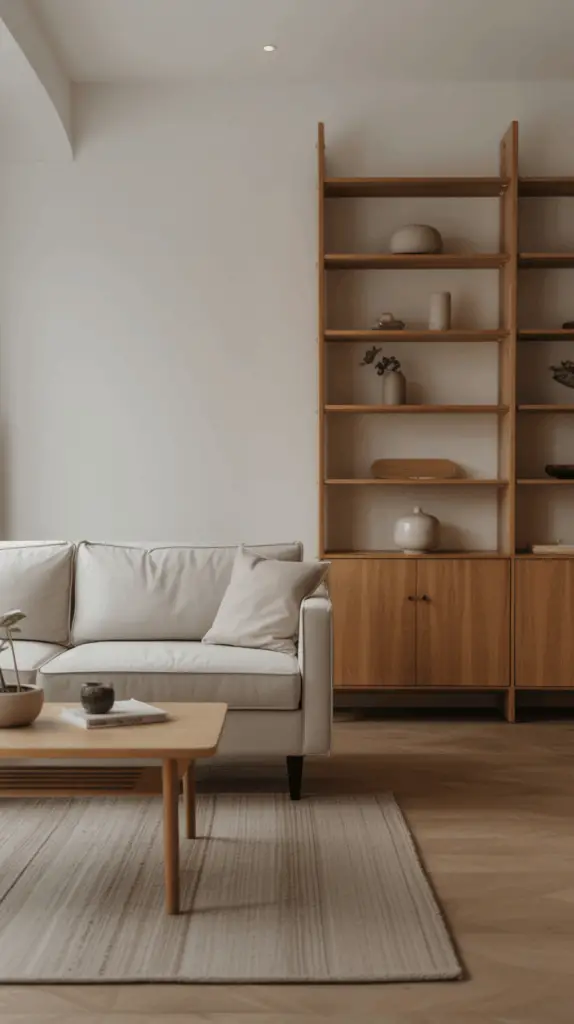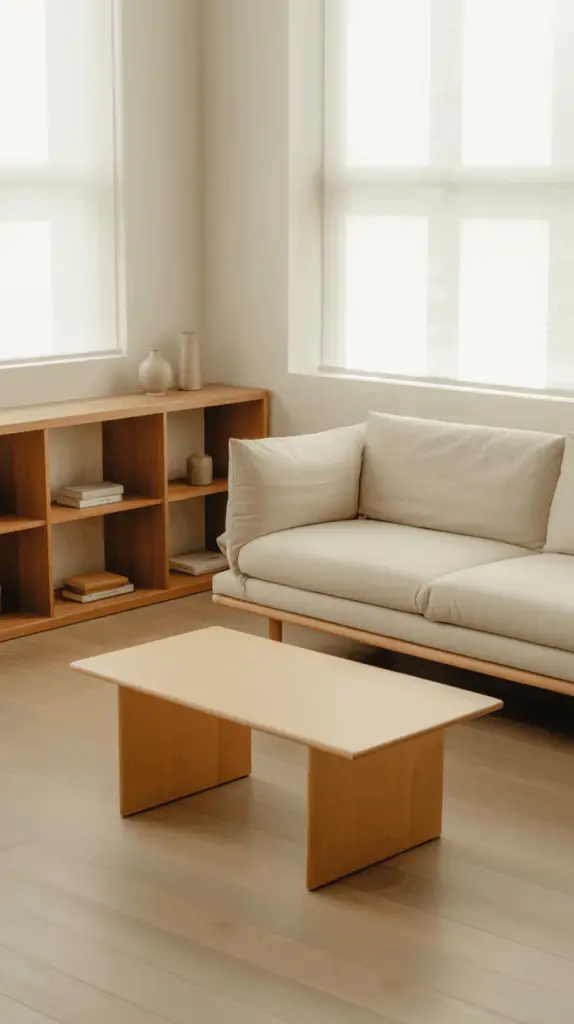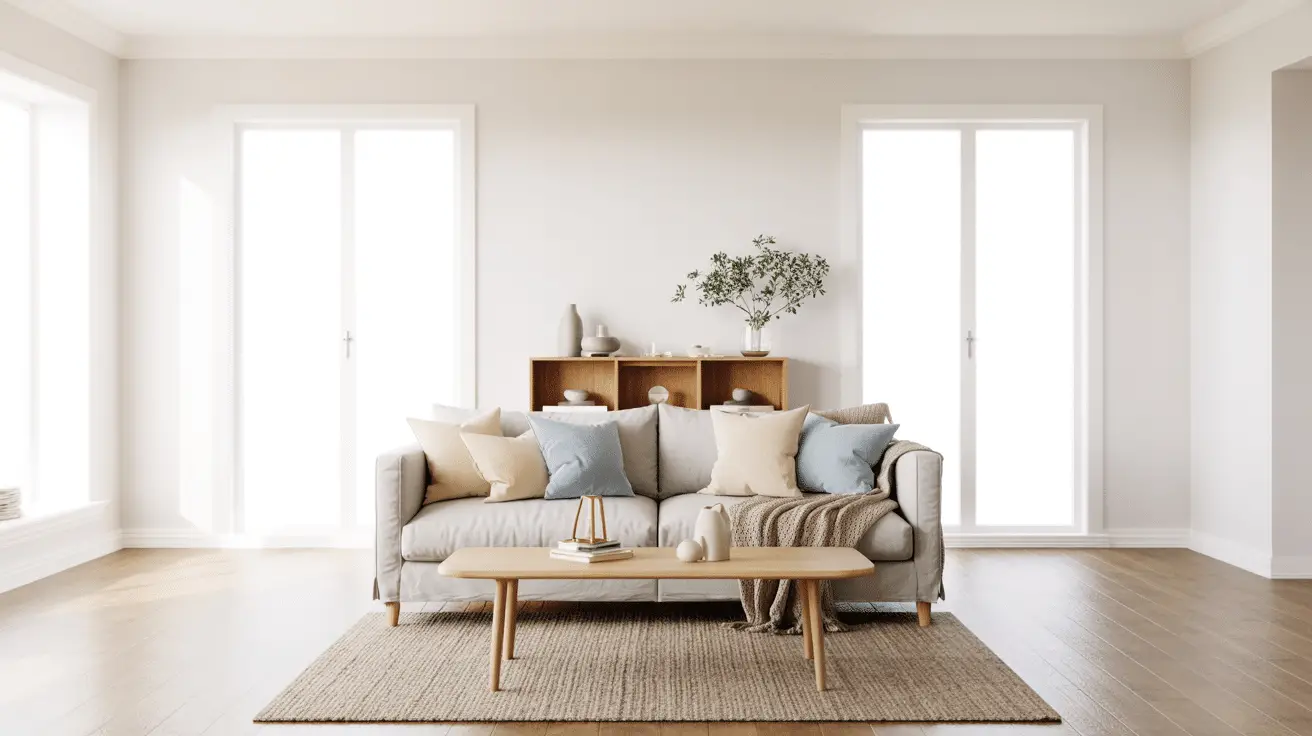How to Achieve the Perfect Scandinavian Interiors Look: Simple Tips for a Cozy, Stylish Space
Table of Contents
Introduction
Scandinavian interior design has taken the world by storm, celebrated for its minimalist charm, functionality, and warmth. The Scandinavian look combines clean lines, light colors, and natural elements, creating a space that feels both serene and welcoming. With its roots in Nordic countries, this design philosophy embraces a less-is-more approach, focusing on simplicity without sacrificing comfort.
For those looking to bring a touch of Scandinavian elegance into their home, achieving this aesthetic can feel like a daunting task. How can you balance the minimalist style without making your space feel cold or uninviting? What design elements are essential for creating a truly Scandinavian-inspired home?
In this post, we’ll explore how to perfect the Scandinavian interiors look. Whether you’re designing a living room, bedroom, or even an entryway, we’ll guide you through the key principles of Scandinavian design—highlighting how to create a space that’s stylish, functional, and comfortable. From color palettes to furniture choices and the use of natural materials, these tips will help you achieve a Nordic-inspired sanctuary that’s cozy, clean, and effortlessly beautiful.
Embrace the Power of Neutral Colors
The color palette is one of the defining features of Scandinavian interiors. When it comes to creating the perfect Scandinavian look, you’ll want to stick to a neutral color scheme. Soft whites, grays, beiges, and light browns dominate the scene. These colors reflect natural light, making rooms feel brighter and airier—essential in the long, dark winters of the Nordic region.
The key to success in Scandinavian design lies in the subtle contrast of tones. While white and gray provide a clean, calming backdrop, you can add depth by layering different shades of the same color. For example, light gray walls paired with a dark gray sofa create an inviting space that still feels open and balanced. Additionally, pops of muted tones like dusty blues, earthy greens, or deep browns can introduce warmth without disrupting the minimalist vibe.
Incorporating these colors across walls, furniture, and accessories helps to unify the space, creating a harmonious flow that feels balanced and serene.
Focus on Minimalism with Purposeful Furniture Choices
When achieving a Scandinavian interior, furniture plays a crucial role. The hallmark of Scandinavian design is minimalist yet functional furniture. The pieces should serve a purpose and offer practicality without being overly ornate. Think clean lines, simple shapes, and designs that combine beauty with utility.
The Scandinavian style emphasizes the use of natural materials, such as wood, which not only looks beautiful but also provides warmth. Furniture made from light woods like oak or birch complements the overall aesthetic, adding texture and grounding the space. Upholstered pieces, such as sofas and chairs, are often covered in neutral-colored fabrics—linen, wool, and cotton being popular choices.
Opt for furniture that allows the room to breathe. Avoid overcrowding with large, bulky pieces and focus on items that have multiple functions. A wooden dining table that doubles as a workspace or an ottoman that can also serve as a coffee table are perfect examples of practical Scandinavian furniture.

Integrate Natural Elements for a Warm, Cozy Feel
To achieve the perfect Scandinavian look, integrating natural elements into your design is essential. Nature plays a central role in Scandinavian interiors, and bringing the outdoors in helps to create a harmonious, soothing atmosphere. Wood, in particular, is a staple in Scandinavian homes. Whether it’s in the form of exposed beams, wooden floors, or furniture, natural wood adds warmth and texture to a space.
In addition to wood, consider adding other natural elements such as stone, plants, and woven textiles. A stone fireplace or a textured stone wall adds a rustic, earthy charm to the space. Indoor plants, from large leafy greens to small succulents, bring life to the room and enhance its serene, natural beauty. Woven throws, woolen rugs, and linen cushions further contribute to the cozy atmosphere.
To truly perfect the Scandinavian interior, aim for a space that feels grounded and connected to nature—creating a sanctuary that feels comfortable, calm, and refreshingly simple.
Play with Lighting to Enhance the Mood
Lighting is an essential element in Scandinavian design, as it helps create the right ambiance. In regions like Scandinavia, where daylight hours can be limited during the winter months, good lighting is a necessity. It’s not just about having enough light—it’s about creating a warm, inviting atmosphere that complements the minimalist aesthetic.
Start by incorporating a mix of lighting sources to achieve balance. Overhead lighting, like pendant lamps or chandeliers, can provide general illumination, while table and floor lamps offer softer, more intimate light. Scandinavian homes often favor simple, functional lighting designs with clean lines. Look for light fixtures in neutral tones, matte finishes, or soft metals to maintain the minimalist aesthetic.
Candles are another hallmark of Scandinavian design, contributing to the coziness of a space. A few strategically placed candles or a set of candle holders on a mantel or dining table can create a soothing, welcoming atmosphere.

Keep It Clutter-Free with Smart Storage Solutions
One of the core principles of Scandinavian design is minimalism, and that means keeping your space clutter-free. Scandinavian interiors are known for their clean, open feel, which is achieved through smart storage solutions. In these homes, everything has its place, and items are kept organized out of sight.
Start by incorporating functional storage pieces, such as built-in shelves, storage benches, and multi-purpose furniture. For example, a coffee table with hidden storage can keep magazines and remote controls tucked away, while a storage bench in the entryway offers a place to stow shoes and bags. Wall-mounted shelving or floating cabinets can help keep floors clear and open up the space.
Additionally, decluttering your space regularly is essential. Scandinavian interiors embrace the idea of “curated simplicity,” where only meaningful and functional items are kept in the space. This not only maintains the aesthetic but also promotes a sense of calm and order in your home.
Add Personality with Textures and Accents
While Scandinavian interiors favor a minimalist look, it’s important to add some personality through textures and accents. These small details help create a welcoming atmosphere without detracting from the overall simplicity of the design. Layering different textures—such as wool, linen, leather, and cotton—adds warmth and dimension to the space.
Consider adding soft woolen throws to your sofa or a luxurious sheepskin rug to your floor. These textures provide comfort and create a tactile contrast against the clean, crisp lines of Scandinavian furniture. You can also incorporate personal touches like artwork, throw pillows, or decorative objects in muted tones or subtle patterns to add interest.
The goal is to strike the perfect balance between simplicity and comfort. With the right mix of textures and accents, you can create a space that feels cozy, inviting, and uniquely yours.
Conclusion
Achieving the perfect Scandinavian interiors look is all about creating a harmonious, minimalist space that is both functional and inviting. By focusing on neutral color palettes, minimalist furniture, natural materials, and smart storage solutions, you can create a home that reflects the beauty and simplicity of Nordic design. Don’t forget the importance of lighting and personal touches, which help bring warmth and character to the space without overwhelming it.
With these simple yet effective tips, you can transform any room into a cozy Scandinavian-inspired sanctuary. Whether you’re redecorating your living room, bedroom, or kitchen, this timeless design style offers the perfect blend of beauty and functionality.

